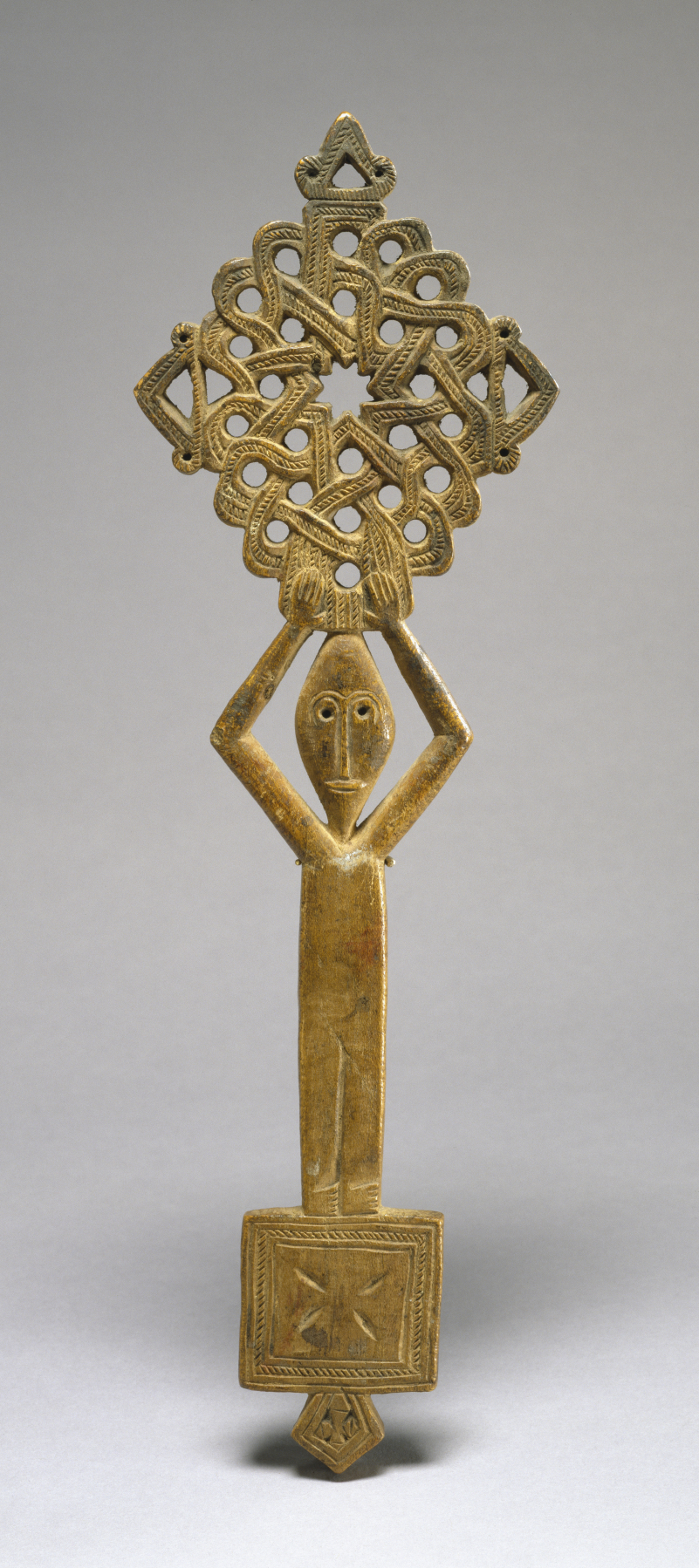Hand Cross with Figure
(Ethiopia)
Hand crosses incorporating human figures are extremely rare and appear to have been executed exclusively in wood. Such figures are sometimes identified as Christ or Adam. As is typical when human forms are carved as part of the shaft, the torso and legs of the figure double as the handle of the cross. The material used in creating this type of cross, which was often carved by the priest who used it, evoked the wood of the cross upon which Christ was crucified. The elaborate interlace of the cross the figure holds must have presented a considerable challenge to the carver, as it had to be created without compromising the structural integrity of the whole piece. Created by drilling holes through the wood and carving linear elements into its surface, this design transformed the overall shape of the cross into a delicate web. The rectangular base may be interpreted as a reference to the tabot, or carved altar box, venerated by Ethiopian Christians.
Provenance
Provenance (from the French provenir, 'to come from/forth') is the chronology of the ownership, custody, or location of a historical object. Learn more about provenance at the Walters.
Knopfelmacher Collection, New York; William Wright Gallery, New York, 1991; Nancy and Robert Nooter Collection [date and mode of acquisition unknown]; Walters Art Museum, 1997, by gift.
Exhibitions
| 2006-2007 | Angels of Light: Ethiopian Art from the Walters Art Museum. Birmingham Museum of Art, Birmingham; Smith College Museum of Art, Northampton; Museum of Biblical Art, New York. |
| 2001-2002 | Realms of Faith: Medieval and Byzantine Art from the Walters Art Museum. Frist Center for the Visual Arts, Nashville. |
Geographies
Ethiopia (Place of Origin)
Measurements
H: 13 3/8 x W: 4 3/16 x D: 9/16 in. (34 x 10.7 x 1.4 cm)
Credit Line
Gift of Nancy and Robert Nooter, 1997
Location in Museum
Centre Street: Third Floor: Byzantine, Russian, and Ethiopian Icons
Accession Number
In libraries, galleries, museums, and archives, an accession number is a unique identifier assigned to each object in the collection.
In libraries, galleries, museums, and archives, an accession number is a unique identifier assigned to each object in the collection.
61.340


